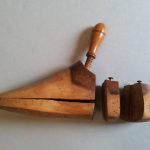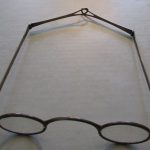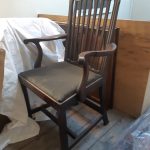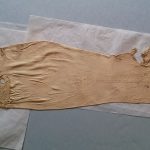Patrick Cotter O’Brien, ‘The Bristol Giant’ (1760 – 1806)
Posted on by Alice Bush.
Did you know that we have many powerful disability stories within our collection? As part of the Curating for Change project, our disabled curator Joanne is busy uncovering, researching and celebrating disabled Bristolians throughout history.
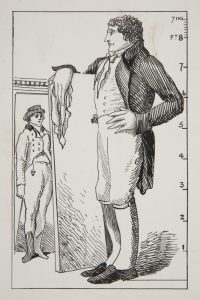
MB2999: Drawing of Patrick Cotter O’Brien
The amazing tale of Patrick Cotter O’Brien begins in 1760. Born to ‘humble folk’ in County Cork, Ireland, he was the second person in medical history to reach the height of 2.4 metres (8 foot) tall.
At 18, working as a bricklayer, O’Brien met a travelling showman from Bristol. He offered Patrick a role as an ‘exhibit’ for £50 a year, but exploited him and ‘sublet’ him to another showman. O’Brien was disempowered, falsely charged with debt, and arrested.
This low point in his life was due to change. While in prison, O’Brien met a man who empathised with this injustice, ended his contract and paid his debts. He also recognised O’Brien’s potential, and lent him money to set up his own one-man entertainment business. Patrick never forgot this friend, and he mentioned him with affection in his will.
Right from the start O’Brien was determined to escape from poverty and to become independent. Just after he was released, he performed at St James’ Fair, and made £30 in three days (the equivalent of £4692 today).
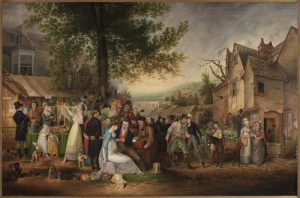
K353: St James’ Fair, Samuel Coleman
Patrick’s life in entertainment was both empowering and challenging. Throughout history, people have been fascinated by visible difference, which could bring both opportunities and barriers. Some might never have seen anybody else with the same difference.
Because of this, one means of gaining a living was to work as a performer. This could expose you to unwanted curiosity and exploitation, but could also enable you to support yourself.
Patrick led an eventful life, but, importantly, unlike a showman’s employee, he was in charge of his own image and career. He was a successful and famous entertainer with a great flair for drama.
He even added an extra foot to his height to add excitement, and changed his name to Patrick O’Brien, claiming he was descended from the Irish king Brian Boru.
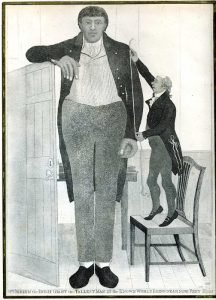
TB346: Print portraying O’Brien being measured by an assistant
Boru was a famously tall, powerful Irish king. Ireland has many myths about people of great height, and this could have inspired O’Brien. He might even have been correct! We now know that people from some parts of Ireland carry a gene variation which makes them much more likely to grow very tall. Perhaps these fabled ‘giant’ kings were real people?
We know that O’Brien was a skilled businessman; in 1785 he advertised that he could be seen by ‘the quality’, selectively inviting people to visit his room in St James Street, London, working between 11am and 4pm. He charged two shillings, but also admitted the ‘humbler sort’ later in the day for a shilling. He toured the UK for nearly 25 years, living in Bristol, London and Essex.
By 1904, he had made enough money to retire at the early age of 44. Despite his success, O’Brien did have challenges in his everyday life. He couldn’t help standing out.
He spent a lot of time indoors during the day. He might have hidden away in order to preserve his livelihood, because his show depended on surprise and novelty, or to avoid the curiosity of passers-by.
He also enjoyed solitary night-time walks in the city and woods, which helped him to sleep and allowed him to exercise in peace and quiet. This was important, as staying indoors by day affected his health.
These walks could be dangerous, as highwaymen roamed the woods, waiting to mug people. O’Brien sometimes used an adapted coach, and passers-by could not tell his height due to the clever design. One night, a highwayman stopped him and was about to rob him, but was so startled when O’Brien looked out that he ran away.
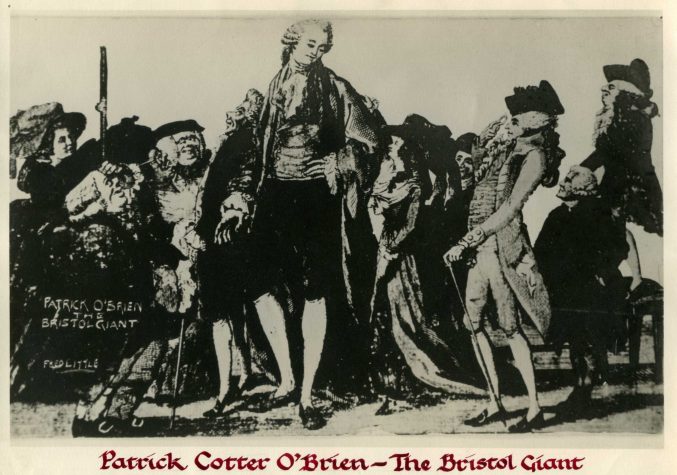
TB344, undated postcard portraying Patrick Cotter O’Brien
Although he had great dignity, Patrick was also “instructive and humorous”, and one of his bets made the news when a reporter, in the year 1800, informed his readers: “O’Brien, the Irish giant, yesterday returned to town, performed some days ago an uncommon feat of gallantry. For a wager of £10 he kissed, en passant, a young lady at a garret window.” When in London, he liked to light his pipe on the street lamps. He also enjoyed playing cards.
He was married in late 1876. “O’Brien, who last winter exhibited his person in St. James’s-street, was lately married at Pancras Church, to a young woman, of the name of Cave, who lived in Bolton-row, Piccadilly.”
People who knew O’Brien described him as good-tempered, intelligent and well-mannered, which didn’t rule out his asserting himself- people who knew him mentioned his courageous personality. He had kept his Irish accent, which exposed him to extra prejudice. In 1826, his Northampton hairdresser describes him as losing his temper when “an impertinent visitant excited his choler one day, during his residence here, by illiberal allusions to the land of his birth. The Philistine was sensible of the insult, seized the prig by the collar, held him out at arm’s length, and gave him three or four mild agitations.”
In day-to-day life, Patrick adapted cleverly to other practical challenges. He needed extra-large clothes made to measure, some of which we still hold in our collections. At this time it was much more common to have clothes made especially for you, and there were no ‘standard’ sizes as there are now.
- TB342: O’Brien’s shoe last
- TB336.2: O’Brien’s spectacles
- G1296: O’Brien’s chair
- TB340: O’Brien’s silk stocking
We still have his ‘shoe-last’, which was used as a model to make his shoes. We also hold his custom-made glasses, stockings, shoes and gloves, and an imposing chair made to his proportions.
O Brien also adapted existing items himself. He joined two beds together so that he could sleep more comfortably, and had a gold watch made to suit his size, with his birthplace and name carved into the back.
We know that he experienced problems with his health. This might have been because of his height, which experts think was due to a pituitary condition called Acromegaly. It could also have been due to his hard-working lifestyle, and to the discrimination he would have faced.
He lived in Hotwells, Bristol at the end of his life, and died on 8 September, 1806. He left £2000 to his mother in his will (the equivalent of 199,500 today). One of his friends kept a shoe of his in his shop window to remember him by.
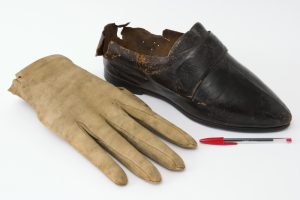
TB341 and TB339: Shoes and gloves worn by O’Brien
He mentioned many friends in his will, and left them money and valuable items, including his gold watch. He was laid to rest in the Catholic chapel in Trenchard Street (where you can still see his memorial plaque).
Because of his life experiences as a person with visible differences, he had the wisdom to request that he be buried within 12ft of solid rock, with heavy iron bars cemented onto the walls. This was to stop curious researchers disturbing his body after his death.
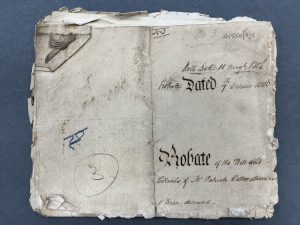
41554/3/5: Copy Probate of the will of Patrick Cotter O’Brien
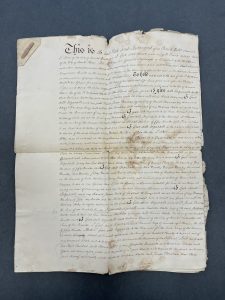
All images are copyright Bristol Culture©
